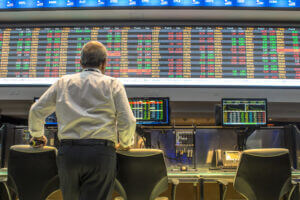The U.S. dollar seems set to end this week with small gains. It fluctuated during the last few days while other major currencies rallied thanks to the shifting risk appetite. The forex market is now focusing on next week’s U.S. Federal Reserve meeting.
The dollar index climbed up slightly on Friday to trade at 92.891. Overall, it gained approximately 0.2% for the week. Still, it’s lower from a 3-1/2-month high of 93.194 reached on Wednesday, when investors regained some of the confidence lost earlier due to concerns about the Delta variant of the coronavirus derailing the global economic recovery. Strong Wall Street earnings rallied the currency for a while until it began decreasing.
ING strategists Petr Krpata, Chris Turner, and Francesco Pesole stated that the dollar index remains relatively close to its recent peaks at 93.00. That is a good performance considering the bearish re-assessment of global and U.S. growth prospects that have occurred during the last month.
They also added that dollar bulls would feel comfortable that the greenback out-performs during a global economic recovery period, where the Federal Reserve looks ready to begin policy normalization, as well as during periods of risk aversion when emerging market and commodity currencies get hit.
How did the Japanese Yen fare today?
The Japanese yen, which is another safe-haven currency, tumbled down by about 0.2% for the week. It exchanged hands at 110.36 on Friday.
At the same time, the Euro traded flat at $1.1772. Thus far, the common currency is unmoved by mixed German and French purchasing manager surveys. Traders are waiting for more surveys for the eurozone, with a whole report due later today.
On Thursday, the European Central Bank promised to keep interest rates at record lows for an even longer period, as the markets widely expected.
Furthermore, ECB President Christine Lagarde announced that a fresh wave of the Covid-19 pandemic could pose a serious risk to the region’s recovery. Despite such ominous news, she also offered a more balanced economic outlook.
Most experts see the ECB’s dovish pivot as weighing on the common currency. However, analysts at TD Securities noted that it could boost the Euro to $1.1851 in the near term. The lack of hints on future policy moves is a significantly lesser disappointment to those looking for a stronger dovish signal – noted the experts.
The Fed’s next meeting will likely provide hints to the FX market’s course

Investors’ next primary focus is on the Federal Reserve’s two-day policy meeting that ends on Thursday. The agency’s officials stated that the Covid-19 cases weighed on the American economy at the previous meeting on June 16. Since then, cases have continued rising.
Despite that, many economists still expect the occurring meeting to produce some advancement in the discussions about the tapering of stimulus aid.
Meanwhile, the British pound rebounded from a significant decline of 1.3% for the week, trading almost flat at $1.3741. The recovery in risk sentiment boosted the sterling even with the broadly rising coronavirus cases.
On the other hand, the Australian dollar plummeted down by 0.3% to $0.7360 on Friday. The Aussie was headed for a 0.5% plunge on the week at last. That would be a fourth straight weekly loss for the currency.
Half the Australian population is still languishing under lockdown. Analysts speculate that the country’s central bank may increase stimulus instead of reducing it at its next policy meeting.
Commonwealth Bank of Australia strategist Joseph Capurso noted that the balance of risks points to more weakness in the Aussie dollar in the near term.
What about the Canadian dollar?
The USD/CAD pair fluctuated between tepid gains and minor losses on Thursday. It failed to maintain its early uptick, instead of meeting with some fresh supply around the 1.2600 mark. The greenback declined against the Canadian dollar, pressured by a combination of factors. The U.S. currency remained in the red through the first half of the trading session amidst the mainly stable market sentiment. A strong follow-through surge in crude oil prices underpinned the commodity-linked CAD.
Meanwhile, the U.S. Initial Jobless Claims soared to 419K during the last week. That news weighed on the U.S. currency. That said, worries that the spread of the highly contagious Delta Covid-19 variant could hinder the global economic recovery boosted the demand for the safe-haven greenback. Such a turn assisted the USD/CAD pair in reversing an intraday drop to one-week lows. It traded near the 1.2530 region, but afterwards, the pair settled with modest intraday gains, climbing higher during the Asian session on Friday.
Rising US Treasury bond yields strengthened the greenback. That, along with subdued crude oil prices, supported the uptick. Traders are now looking forward to the economic docket, including the release of Canadian Retail Sales figures and flash U.S. PMI prints. They will take cues from the U.S. dollar/oil price dynamics to use some short-term opportunities.











